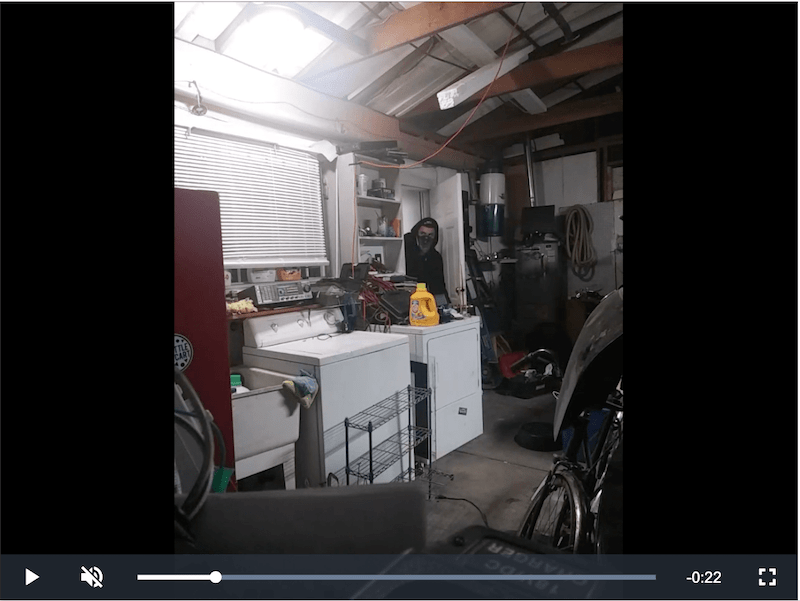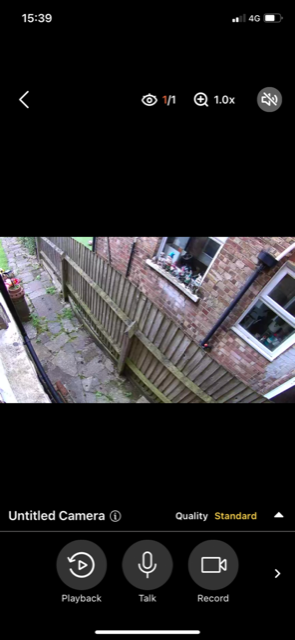Ever wondered what’s actually safe during a home break-in? While most homeowners focus on protecting their valuables, understanding what burglars don’t steal can be just as valuable for your home security strategy.
Here’s a surprising fact: the average burglary lasts just 10 minutes. In that short window, criminals are highly selective about what they take. They’re not loading up moving trucks or carefully dismantling your home theater system, they’re grabbing quick, high-value items and getting out fast. Getting a safe protects valuables and potentially deters burglars, because if they can’t immediately find what they’re looking for, they’re more likely to leave.
This guide reveals the 8 categories of items burglars consistently ignore, what they actually target, plus tips on how to protect a property against break-ins.
Understanding the Burglar’s Mindset: Speed Over Everything
Burglars know exactly what items to look and steal for when breaking and entering. Once inside, the most common areas are targeted to find these items quickly and quietly. Their primary goal isn’t to empty your entire house, it’s to grab valuable, portable items and escape undetected.
Most burglars operate alone and carry everything in a backpack or small bag. This limitation shapes every decision they make once inside your home. If an item is too heavy, too bulky, too risky, or offers poor resale value, it simply isn’t worth their time. When deciding what to keep in a home safe and which areas of the property to protect, it’s equally important to know what burglars don’t steal as knowing what they look out for.
8 Items Burglars Won’t Steal (And Why)
A burglar’s goal is to get in and out of a property undetected, which means as fast as possible. Most US burglaries only last 10 minutes. Therefore, burglars are unlikely to steal any large or fitted appliances. Weapons and perishable items (like food and alcohol) are also unlikely to be stolen during a standard home invasion. The following items tend to be safe during a break-in of an occupied residential home:
1. Large Electronics and Entertainment Systems
While burglars love electronics, they draw the line at oversized items. That 75-inch TV mounted on your wall? Your elaborate home cinema setup with multiple components? Generally safe.
Why they skip them:
- Too conspicuous to carry without attracting attention
- Require two people to move safely
- Difficult to fence quickly
- High risk of damage during transport
2. Fitted and Built-In Electronics
Burglars prefer a fast break-in. Therefore, fitted electronics and appliances are generally not stolen. Removing them from the walls also creates too much noise.
Examples include:
- Surround sound systems wired through walls
- Built-in speakers and audio equipment
- Smart home control panels
- Hardwired security systems
- Ceiling-mounted projectors
3. Major Household Appliances
Any household appliance, including washing machines, tumble dryers, and dishwashers, is not a target during a break-in. These items are heavy and have little resale value. The only time these items might be stolen is if the property is vacant and looted. The metal from the appliances will be sold by criminals for scrap money.
Is your property about to be vacant? Whether a home is empty for years or just a month, vacant properties are at increased risk of break ins, looting, and sustaining criminal damage.
Find out exactly what security measures to protect a vacant property.
4. Firearms and Weapons
This one surprises many homeowners. Despite their value, guns are rarely stolen during typical home burglaries. Sentences are usually more severe when burglars steal guns from a property as well as residential items. Because of this, few criminals steal guns from homes.
Research also shows that 17% of US burglars already carry a weapon of some sort during a home invasion.
Prevent break-ins with AlfredCamera
Home invasions are common in the US. The best deterrent against break-ins is home security cameras. When surveyed, ex-criminals said they would be less likely to target a property with cameras installed.
AlfredCamera transforms your mobile devices into security cameras for free. Simply download AlfredCamera to your phone (Android & iOS) and a spare phone or tablet, and it’ll convert the device into a fully functioning security camera.

5. Musical Instruments
Few burglars need to steal musical instruments. They are bulky, heavy, and hard to carry solo. Unless antique, they don’t have a particularly high resale value compared to other items found in the home.
Higher-risk instruments: Small, valuable items like professional-grade violins, vintage guitars, or brass instruments may be taken if they’re visible and accessible.
6. Food, Alcohol, and Perishables
Your kitchen is one of the safest rooms in your house during a burglary. Criminals targeting residential properties have zero interest in your groceries or liquor cabinet. Burglars are more likely to target liquor stores, bars, cafés, and supermarkets than a residential property if they want to steal food or drink.
7. Low-Value Household Items
Burglars prefer to steal items that offer the highest return. Therefore, things that are or look expensive are a primary target. Few criminals would steal anything in a residential home that isn’t of high value. Your everyday appliances and household goods simply don’t make the cut.
For example, kettles, microwaves, air fryers, and coffee machines. Some burglars will steal these items, but they aren’t as valuable as laptops, phones, or Bluetooth speakers.They’re optimizing for value per pound.
8. Furniture and Large Household Goods
Flatpacks aside, household furniture is often expensive. Particularly when it’s made from real, solid wood and other high quality materials, its resale value is high. But most furniture is not easily stolen and taking these items is loud and requires a large van to transport. Most burglars are not so well-prepared, preferring to slip items like cash, purses, keys, and jewelry into a rucksack instead.
What Burglars Actually DO Steal
Because criminals want a quick, undetected break-in, burglars are more likely to steal small, valuable items. Understanding what thieves avoid is only half the equation. Ideally, these items are small enough to fit inside a bag or coat pocket without drawing attention when they leave. Here’s what burglars actively seek when they enter your home:
- Electronics: Laptops, tablets, smartphones, cameras, and smaller TVs
- Cash: The most valuable item to a burglar—no paper trail, immediate use
- Jewelry and watches: Small, valuable, easily portable
- Keys: Car keys and house keys (which enable further crimes)
- Designer items: Handbags, shoes, and clothing with recognizable brands
- Wallets and purses: Cash, credit cards, and identity documents
- Medications: Prescription drugs, especially controlled substances
- Important documents: Passports, birth certificates, Social Security cards
Get 24/7 night vision surveillance with AlfredCam
Burglars strike any time, including the evening. Protect your property at night with AlfredCam Plus night vision cameras. Get access to clear images of what’s happening inside and outside of your property. When motion is detected at any hour of the night, users receive an immediate alert to a connected smartphone.




What to Keep in a Home Safe
While many items are naturally safe from burglars due to size or weight, your most valuable possessions deserve extra protection. Safes are best used to store emergency cash, guns, and valuables.
Valuables kept inside a safe also include passports, ID cards, spare car keys, expensive jewelry, birth certificates, title deeds, wills, healthcare documents, and memory cards. Guns and other weapons should also be kept in a home safe. This prevents children from finding the guns by accident or intruders from using them during a home invasion.
Some homeowners choose to keep family heirlooms and sentimental items in a home safe. While these aren’t usually expensive, they hold priceless personal value.
Look for models that are both fireproof and waterproof to protect against disasters beyond burglary. Learn more about selecting the best home safe for your specific needs.
FAQ
What attracts burglars to a home?
Burglars target properties with a lack of security and easy access points. Or homes that are obviously vacant. Open windows, no visible cameras, overgrown shrubbery, no lighting, no cars on the driveway, and overflowing mailboxes attract burglars the most. Houses are more of a target than apartments due to the accessible entry points, likefront doors, back doors, and ground floor windows.
What really deters burglars?
Criminals don’t want to be caught in the act when attempting a home invasion, so the best deterrent is a visible home security camera. Similarly, other reliable burglar deterrents include alarms and motion-detection flood lights. These alert homeowners to the presence of an intruder and scare them off from progressing any further.
Other ways to deter burglars from breaking in include installing physical barricades. For example, high fencing, anti-climb paint, spiked boundaries, and thorny plants. When installed on the property boundaries, these physically prevent burglars from jumping over gates or fences.
Where do burglars look first in a home?
Bedrooms, living areas, hallways, and home offices are the most visited rooms during a home break-in. Living areas and home offices often contain tablets, laptops, TVs, and other electronics for intruders to steal. Burglars look in bedroom wardrobes and dressing tables to find expensive clothing or jewelry. Kids’ bedrooms are also a target due to the toys and gadgets that may lie inside. Burglars also look for keys, wallets, and handbags in hallways, kitchens, or lounges.
Do curtains and blinds deter burglars?
Burglars target properties they know contain valuables. This knowledge usually comes from peering into windows to look for valuables before choosing to enter. They also do this to check if anyone is home.
Closing blinds and curtains at night prevents burglars from being able to see what’s inside the property. However, keeping curtains drawn during the daytime isn’t pleasant. Plus, it makes the property look vacant, which is also risky.
Privacy curtains are best installed if the property is vacant during the day. Having privacy curtains allows light into the property without making it easy for criminals to see what’s inside.
Conclusion
Most household items are safe during a break-in. Burglars tend to target small items that hold high value. Unless the house is unprotected and presumed empty, intruders won’t generally go rooting around for too long inside the house.
Instead, they steal valuables that are easy to spot and grab. That’s why phones, purses, handbags, wallets, cash, and car keys shouldn’t be left close to the door.
When a property is vacant, all items are up for grabs. Criminals can easily bring large vans and other equipment when they know no one is home or monitoring the property with home security cameras.
